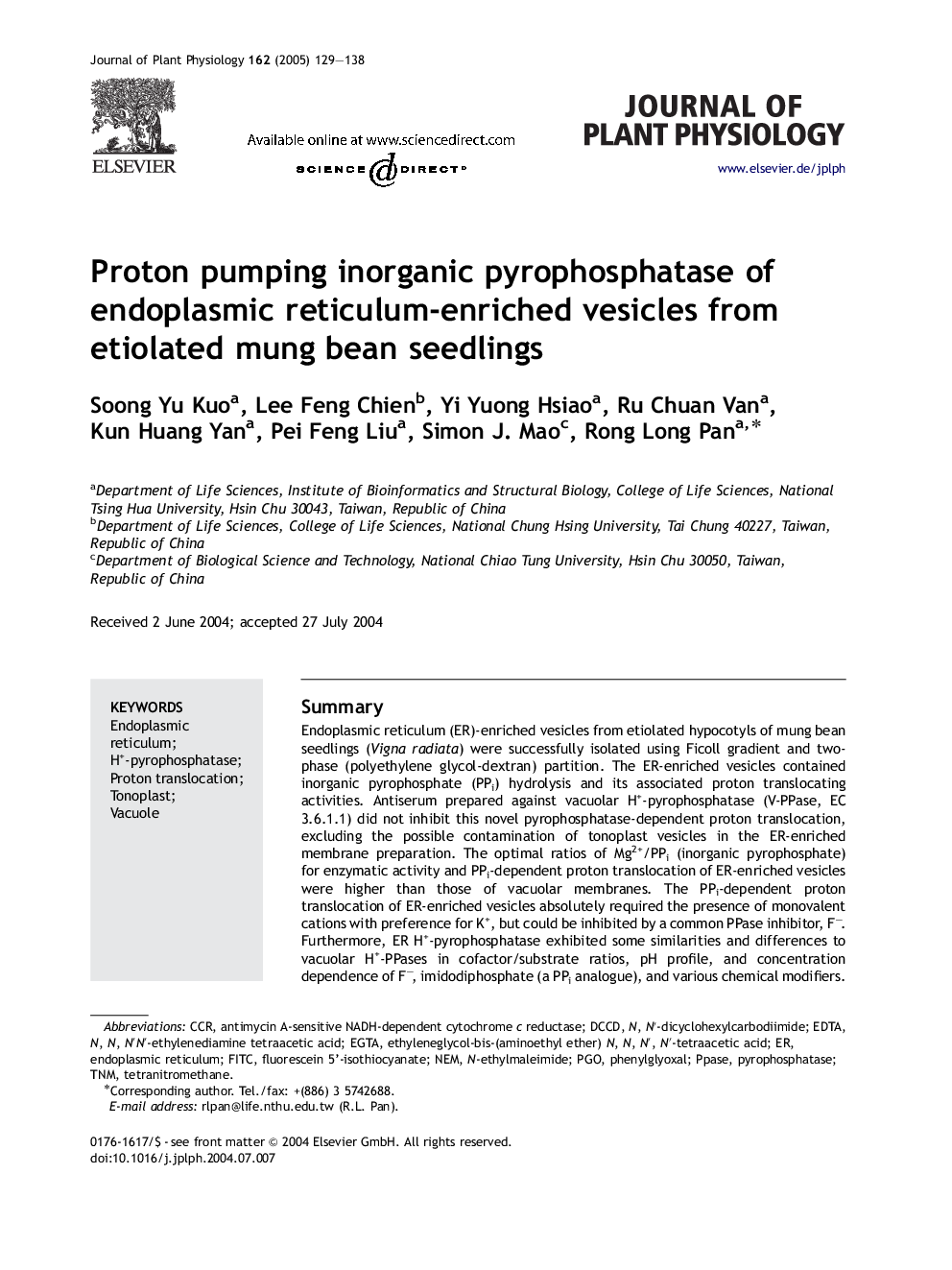| Article ID | Journal | Published Year | Pages | File Type |
|---|---|---|---|---|
| 10877044 | Journal of Plant Physiology | 2005 | 10 Pages |
Abstract
Endoplasmic reticulum (ER)-enriched vesicles from etiolated hypocotyls of mung bean seedlings (Vigna radiata) were successfully isolated using Ficoll gradient and two-phase (polyethylene glycol-dextran) partition. The ER-enriched vesicles contained inorganic pyrophosphate (PPi) hydrolysis and its associated proton translocating activities. Antiserum prepared against vacuolar H+-pyrophosphatase (V-PPase, EC 3.6.1.1) did not inhibit this novel pyrophosphatase-dependent proton translocation, excluding the possible contamination of tonoplast vesicles in the ER-enriched membrane preparation. The optimal ratios of Mg2+/PPi (inorganic pyrophosphate) for enzymatic activity and PPi-dependent proton translocation of ER-enriched vesicles were higher than those of vacuolar membranes. The PPi-dependent proton translocation of ER-enriched vesicles absolutely required the presence of monovalent cations with preference for K+, but could be inhibited by a common PPase inhibitor, Fâ. Furthermore, ER H+-pyrophosphatase exhibited some similarities and differences to vacuolar H+-PPases in cofactor/substrate ratios, pH profile, and concentration dependence of Fâ, imidodiphosphate (a PPi analogue), and various chemical modifiers. These results suggest that ER-enriched vesicles contain a novel type of proton-translocating PPase distinct from that of tonoplast from higher plants.
Keywords
Related Topics
Life Sciences
Agricultural and Biological Sciences
Agronomy and Crop Science
Authors
Soong Yu Kuo, Lee Feng Chien, Yi Yuong Hsiao, Ru Chuan Van, Kun Huang Yan, Pei Feng Liu, Simon J. Mao, Rong Long Pan,
